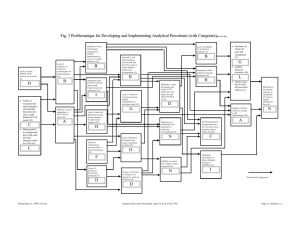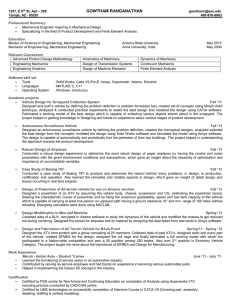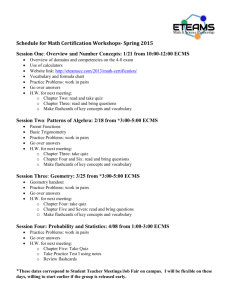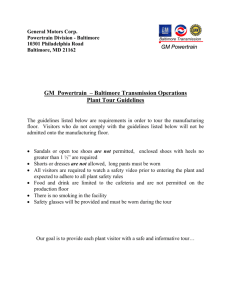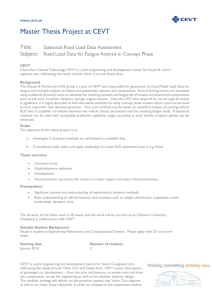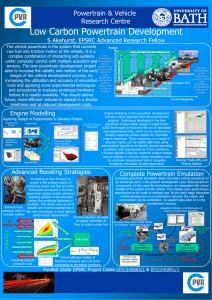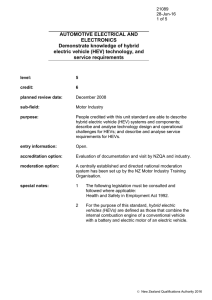Application of Situational Awareness in Powertrain Control of Parallel Hybrid... , Y. P. Fallah B. Khaki , H. Kazemi
advertisement
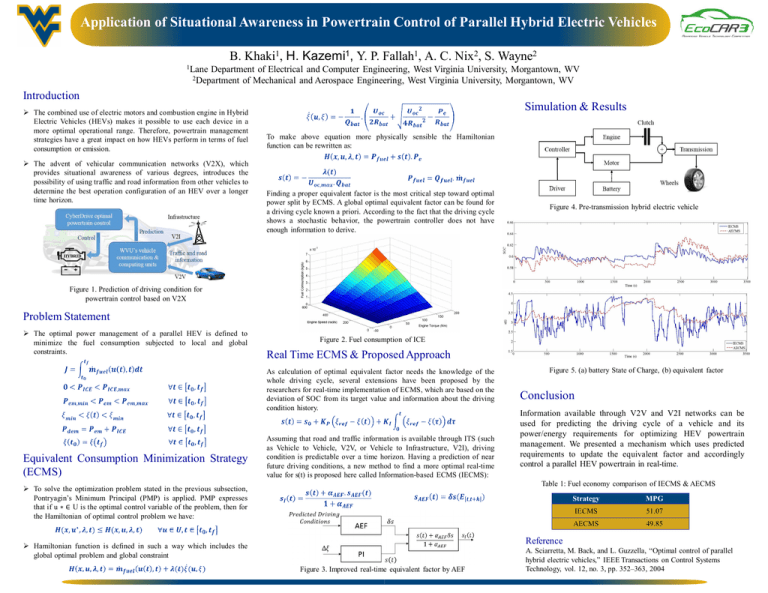
Application of Situational Awareness in Powertrain Control of Parallel Hybrid Electric Vehicles B. Khaki1, H. Kazemi1, Y. P. Fallah1, A. C. Nix2, S. Wayne2 1Lane Department of Electrical and Computer Engineering, West Virginia University, Morgantown, WV of Mechanical and Aerospace Engineering, West Virginia University, Morgantown, WV 2Department Introduction The combined use of electric motors and combustion engine in Hybrid Electric Vehicles (HEVs) makes it possible to use each device in a more optimal operational range. Therefore, powertrain management strategies have a great impact on how HEVs perform in terms of fuel consumption or emission. The advent of vehicular communication networks (V2X), which provides situational awareness of various degrees, introduces the possibility of using traffic and road information from other vehicles to determine the best operation configuration of an HEV over a longer time horizon. Simulation & Results To make above equation more physically sensible the Hamiltonian function can be rewritten as: Finding a proper equivalent factor is the most critical step toward optimal power split by ECMS. A global optimal equivalent factor can be found for a driving cycle known a priori. According to the fact that the driving cycle shows a stochastic behavior, the powertrain controller does not have enough information to derive. Figure 4. Pre-transmission hybrid electric vehicle Figure 1. Prediction of driving condition for powertrain control based on V2X Problem Statement The optimal power management of a parallel HEV is defined to minimize the fuel consumption subjected to local and global constraints. Figure 2. Fuel consumption of ICE Real Time ECMS & Proposed Approach As calculation of optimal equivalent factor needs the knowledge of the whole driving cycle, several extensions have been proposed by the researchers for real-time implementation of ECMS, which are based on the deviation of SOC from its target value and information about the driving condition history. Equivalent Consumption Minimization Strategy (ECMS) Assuming that road and traffic information is available through ITS (such as Vehicle to Vehicle, V2V, or Vehicle to Infrastructure, V2I), driving condition is predictable over a time horizon. Having a prediction of near future driving conditions, a new method to find a more optimal real-time value for s(t) is proposed here called Information-based ECMS (IECMS): Figure 5. (a) battery State of Charge, (b) equivalent factor Conclusion Information available through V2V and V2I networks can be used for predicting the driving cycle of a vehicle and its power/energy requirements for optimizing HEV powertrain management. We presented a mechanism which uses predicted requirements to update the equivalent factor and accordingly control a parallel HEV powertrain in real-time. Table 1: Fuel economy comparison of IECMS & AECMS To solve the optimization problem stated in the previous subsection, Pontryagin’s Minimum Principal (PMP) is applied. PMP expresses that if u ∗ ∈ U is the optimal control variable of the problem, then for the Hamiltonian of optimal control problem we have: Strategy MPG IECMS 51.07 AECMS 49.85 Reference Hamiltonian function is defined in such a way which includes the global optimal problem and global constraint Figure 3. Improved real-time equivalent factor by AEF A. Sciarretta, M. Back, and L. Guzzella, “Optimal control of parallel hybrid electric vehicles,” IEEE Transactions on Control Systems Technology, vol. 12, no. 3, pp. 352–363, 2004


